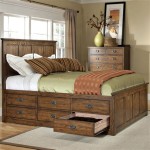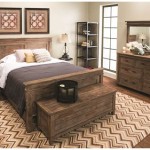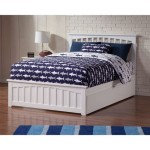What Is The Best Carpet For Bedrooms?
Selecting the ideal carpet for a bedroom involves careful consideration of various factors. Bedrooms are often considered personal sanctuaries, spaces dedicated to rest, relaxation, and comfort. The chosen flooring significantly contributes to the overall ambiance and functionality of the room. Evaluating characteristics such as fiber type, pile height, density, stain resistance, and budget is crucial in making an informed decision. Different carpet types offer distinct advantages and disadvantages regarding durability, maintenance, and aesthetic appeal. This article comprehensively examines the key aspects of selecting the best carpet for a bedroom, providing detailed insights into various carpet types, their properties, and suitability for bedroom environments.
Understanding Key Carpet Properties
Several key properties influence a carpet's performance and suitability for a bedroom setting. Fiber type, pile height, density, and stain resistance play significant roles in determining the carpet's durability, comfort, and ease of maintenance. Understanding these properties is essential for making an informed decision that aligns with specific needs and preferences.
Fiber Type: Carpet fibers are available in various materials, each offering unique characteristics. Nylon, polyester, olefin (polypropylene), and wool are the most common fiber types. Nylon is renowned for its exceptional durability, resilience, and stain resistance, making it a popular choice for high-traffic areas. Polyester offers good stain resistance and is more affordable than nylon, but it may not be as durable. Olefin is solution-dyed, providing excellent fade resistance and is often used in Berber carpets. Wool is a natural fiber known for its luxurious feel, inherent stain resistance, and durability, but it is also the most expensive option. The choice of fiber type significantly impacts the carpet's longevity, appearance, and maintenance requirements.
Pile Height and Density: Pile height refers to the length of the carpet fibers, while density refers to the closeness of the fibers. Higher pile carpets offer a plusher, more luxurious feel underfoot, while lower pile carpets tend to be more durable and easier to clean. Dense carpets, with tightly packed fibers, are generally more resilient and resistant to crushing than less dense carpets. For bedrooms, a medium pile height with good density is often preferred, providing a balance of comfort and durability. Consider the amount of traffic the bedroom floor will experience when determining the ideal pile height and density.
Stain Resistance: Bedrooms, while not typically subjected to the same levels of spills and stains as other areas of the home, can still benefit from stain-resistant carpets. Opting for carpets with built-in stain protection or those made from inherently stain-resistant fibers, such as olefin or solution-dyed nylon, can help maintain the carpet's appearance and prolong its lifespan. Regular cleaning and prompt treatment of spills are also crucial for preventing permanent stains. Consider the lifestyles of the occupants and the potential for spills when evaluating stain resistance.
Exploring Different Carpet Types and Their Suitability for Bedrooms
Various carpet types are available, each offering distinct characteristics and aesthetic appeal. Understanding the differences between these types is crucial in selecting the best option for a bedroom setting. Common carpet types include plush, Berber, frieze, and cut-and-loop.
Plush Carpet: Plush carpet features a smooth, even surface with densely packed, cut fibers. It offers a soft, luxurious feel underfoot, making it a popular choice for bedrooms. Plush carpets are available in various pile heights and densities, allowing for customization to suit specific preferences. However, plush carpets can be prone to showing footprints and vacuum marks, requiring more frequent maintenance to maintain their appearance. Saxony and velvet are two common types of plush carpet that can create a high-end look. Consider the level of foot traffic and the desired level of formality when evaluating plush carpet for a bedroom.
Berber Carpet: Berber carpet is characterized by its looped pile construction, creating a textured, patterned surface. It is known for its durability, stain resistance, and ability to hide dirt and debris, making it a practical choice for high-traffic areas. Berber carpets are available in various loop sizes and colors, offering versatility in design. However, Berber carpets can be less soft and comfortable underfoot compared to plush carpets. Snags can also occur if the loops are pulled, especially in households with pets. Consider the level of durability required and the desired level of comfort when evaluating Berber carpet for a bedroom.
Frieze Carpet: Frieze carpet features a highly twisted, shaggy pile construction, creating a textured, casual appearance. It is known for its durability, ability to hide dirt and footprints, and comfortable feel underfoot. Frieze carpets are a good option for bedrooms where a relaxed, informal ambiance is desired. However, the long, shaggy fibers can be more challenging to clean than other carpet types. Vacuuming regularly and using appropriate cleaning methods are essential for maintaining the appearance of frieze carpets. Consider the desired level of formality and the ease of maintenance when evaluating frieze carpet for a bedroom.
Cut-and-Loop Carpet: Cut-and-loop carpet combines cut and looped fibers, creating a patterned or textured surface. It offers a balance of durability, stain resistance, and visual appeal. Cut-and-loop carpets are available in various patterns and colors, allowing for customization to suit specific design preferences. The combination of cut and looped fibers can also help to hide dirt and footprints. This type is often chosen for its decorative potential. Consider the desired level of pattern and texture when evaluating cut-and-loop carpet for a bedroom.
Factors to Consider Beyond Carpet Type
While choosing the right carpet type is crucial, other factors also play a significant role in selecting the best carpet for a bedroom. These factors include budget, color and style, underlayment, and installation.
Budget: Carpet prices vary widely depending on the fiber type, pile height, density, and brand. Establishing a budget before starting the selection process is essential for narrowing down the options and avoiding overspending. Consider the long-term cost of ownership, including maintenance and cleaning expenses, when evaluating different carpet options. While cheaper options may seem appealing initially, they may not offer the same durability and performance as more expensive options, leading to higher replacement costs in the long run. A balance between cost and quality is essential to ensure a satisfactory outcome.
Color and Style: The color and style of the carpet significantly impact the overall ambiance of the bedroom. Light colors can make a room feel more spacious and airy, while dark colors can create a cozy, intimate atmosphere. Neutral colors, such as beige, gray, and cream, are versatile and can complement a wide range of décor styles. Bold colors and patterns can add personality and visual interest to the room. Consider the existing décor and the desired mood when selecting the color and style of the carpet. Samples should be viewed in the bedroom under different lighting conditions to ensure the color and style are appropriate.
Underlayment: Underlayment, also known as carpet padding, is a layer of material installed beneath the carpet to provide cushioning, insulation, and noise reduction. It also helps to extend the lifespan of the carpet by protecting it from wear and tear. Choosing the right underlayment is crucial for maximizing the benefits of the carpet. Different types of underlayment are available, including foam, felt, and rubber. The thickness and density of the underlayment should be appropriate for the type of carpet and the level of traffic the bedroom will experience. A high-quality underlayment can significantly improve the comfort and performance of the carpet.
Installation: Proper carpet installation is essential for ensuring the carpet's longevity and performance. Poorly installed carpets can develop wrinkles, seams, and other problems that can detract from their appearance and reduce their lifespan. Hiring a professional installer is recommended to ensure the carpet is installed correctly. The installer should properly stretch and secure the carpet, ensuring a smooth, even surface. A professional installation can also help to prevent problems such as buckling and bunching.
In conclusion, selecting the best carpet for a bedroom involves a comprehensive evaluation of various factors, including fiber type, pile height, density, stain resistance, budget, color, style, underlayment, and installation. By carefully considering these factors and understanding the properties of different carpet types, homeowners can make an informed decision that aligns with their specific needs and preferences, creating a comfortable, stylish, and functional bedroom environment.

What Kind Of Carpet Is Best For Bedrooms Riterug Flooring

Best Carpet Ideas For Bedroom Flooring

Soft Touch How To Choose Carpet For Your Bedroom

Picking The Best Bedroom Rug Complete Guide Floorspace

What Kind Of Carpet Is Best For Bedrooms Riterug Flooring

Wool Vs Synthetic Carpet Best For Bedrooms

Best Carpet Ideas For Bedroom Flooring

How To Choose The Best Carpet For Bedrooms Homebuilding

Wool Vs Synthetic Carpet Best For Bedrooms

Picking The Best Bedroom Rug Complete Guide Floorspace








